SAP Manufacturing Integration and Intelligence (SAP MII) is used to improve your manufacturing processes. SAP PRESS has recently published the book Implementing SAP MII co-authored by Dipankar Saha (Principal Architect – Incture Technologies).
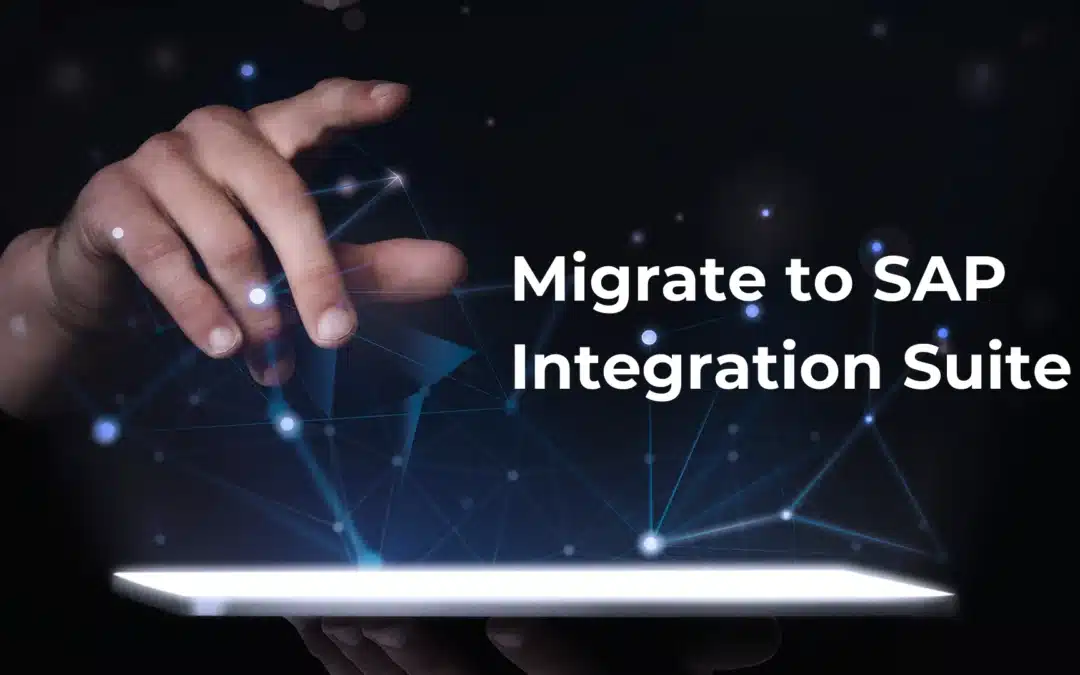
WRITTEN BY
INTEGRATION
Introduction
Trading Partner Management (TPM) – Idea of the trading partner management system is to maintain all the reusable pieces in a central place that you and your partner look frequently; Such as the Company Profile, Trading Partner Profiles (TPPs), user of their systems, identifiers, kind of communication parameters, kind of communication channels, kind of supported B2B standards and other things that are necessary to build the Trading partner Agreements. You can create the same kind of profile for all your Trading Partners. It defines and identifies different kinds of messages, communication protocols, communication channels, standards that are followed across the partners.
Trading Partner Agreement Templates (TPA) – Before building an Agreement, you have to build the Trading Partner Agreement Templates. Then, you can use it for other partners.
It defines the Trading partner Agreement, B2B scenario, type of message you want to exchange between you and your trading partner. Once Agreement is done, it pushes the agreement to Partner Directory. Partner Directories are part of cloud integration.
How does TPA work – Agreement is a key part of trading partner management system that covers B2B scenario. Data will be exchanged between different channels in two way transactions, INBOUND and OUTBOUND. Receiving data from Trading Partner is called as INBOUND and sending data from Company to Partner known as OUTBOUND.

1. Define the Company details
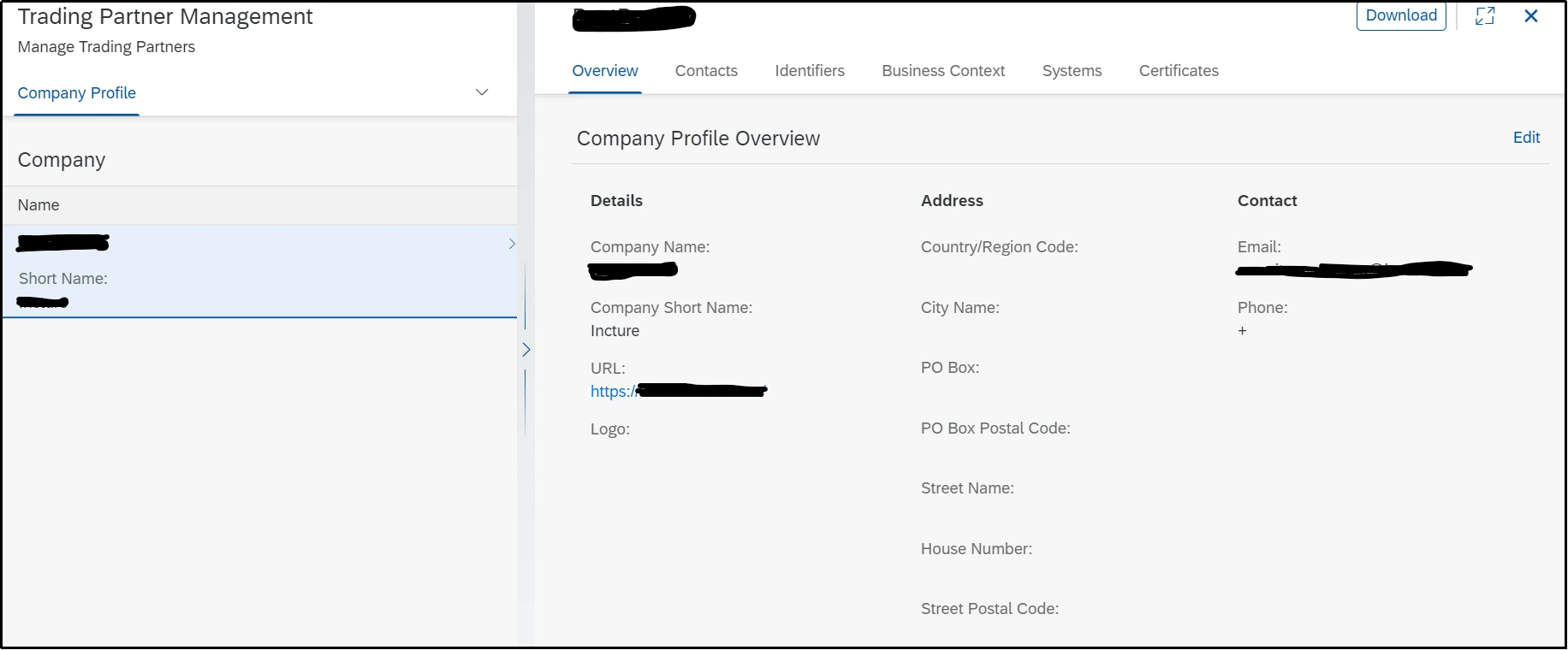
Fill the Contacts details

Fill the Identifier details with correct System name and version

Fill the Business Context with Business process, Business Process Role, Industry classification, product classification and Country

Fill the System details – select Type system and Purpose from the drop down.Inside the System select the B2B standard that your Partner follows.

Once System details are defined, go to “Communication” tab and select the communication channel using which you exchange your data

2. Define the Trading Partner details


Fill the Contacts details
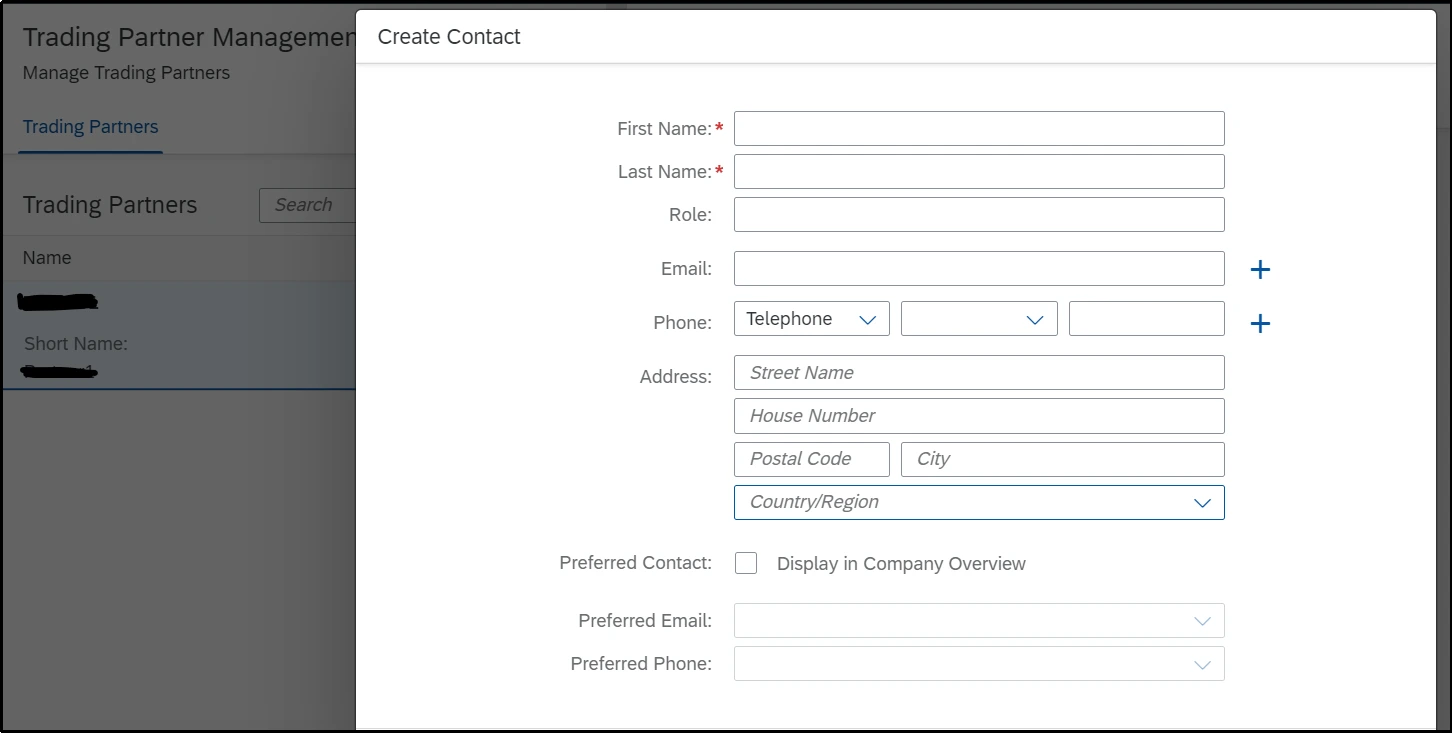
Fill the Identifier details with correct System name and version

Fill the Business Context with Business process, Business Process Role, Industry classification, product classification and Country

Fill the System details – select Type system and Purpose from the drop down

3. Agreement Templates
Once Company and Trading Partner details are filled, these will be reflected in Agreement Templates with Company as Initiator and Partner as Reactor.

All the details will be reflected under Overview of Agreement Template

Under B2B Scenarios of Trading Partner Agreement Template, the detailed flow between Sender and Receiver along with the Communication channel details, Interchange Type System and Mapping from IA will be reflected.
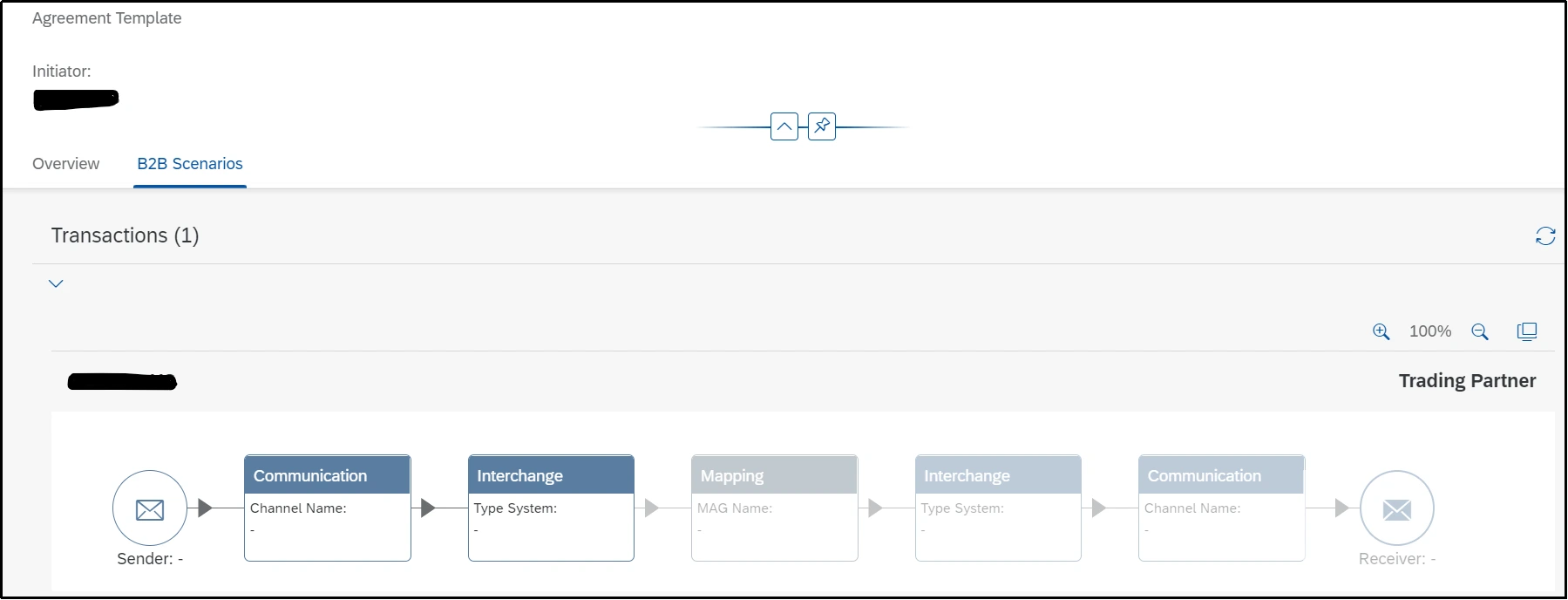
You can check how the Message Implementation guideline looks like in Partner Side and also the Mapping guidelines coming from IA for that specific requirement.
4. Agreements
Under agreement tab, you can view both the Company and Partner details.
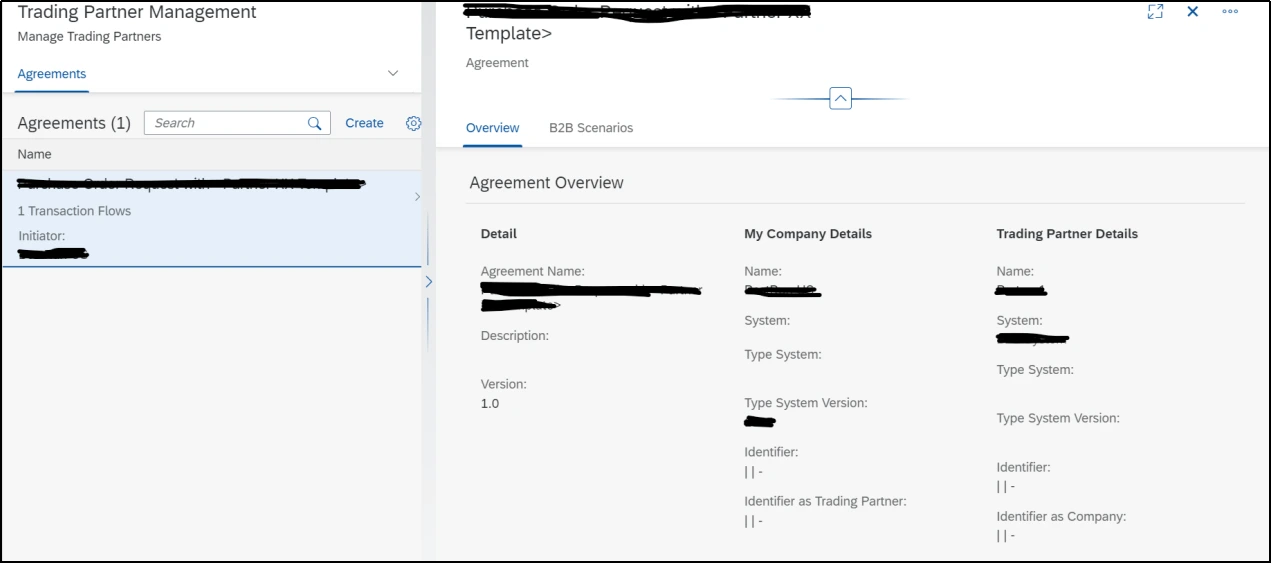
After all the details are updated successfully between Company and Partner, click on Active button and then Status will change to ‘Active’ and huge set of parameters will be pushed to Partner Directory.

Partner Directory(PD) is a database table which stores the Trading Partner Identifiers, Parameter ID and value. Information, value and parameter Ids are provided inside the Generic Integration flow. We can then process the data in integration flow via PD.


*ImageSource – https://blogs.sap.com/2021/12/17/announcement-sap-trading-partner-management-and-b2b-monitoring-brand-new-capabilities-of-sap-integration-suite-is-released/
Generic Integration Flow is divided into 3 parts:
1. Sender Communication Flow
2. Interchange Processing Flow – Transform from the Source structure to the Target structure
3. Receiver Communication Flow (sends to receiver via defined adapter)

*ImageSource – https://blogs.sap.com/2021/12/17/announcement-sap-trading-partner-management-and-b2b-monitoring-brand-new-capabilities-of-sap-integration-suite-is-released/
Go to Monitor Level of B2B Scenario
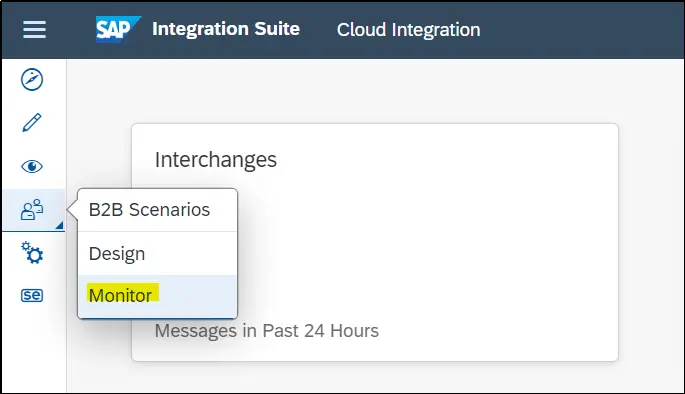
All the details that we have maintained at partner level will be displayed at B2B Monitor tab.
Conclusion :
This blog helps you to create Company profile, Partner profile, Agreement templates and Agreements between different partners for any B2B scenarios.
TPM Capabilities extend the B2B offering within Integration suite to cover specific B2B scenarios for different partners with different standards like X12, EDIFACT or IDoc and different communication protocols in a very quick and efficient manner.
Reference Link:
https://blogs.sap.com/2021/12/17/announcement-sap-trading-partner-management-and-b2b-monitoring-brand-new-capabilities-of-sap-integration-suite-is-released/
https://api.sap.com/package/CloudIntegrationTradingPartnerManagement/integrationflow
Please follow the below blogs:
– To know more about Integration suite
https://community.sap.com/topics/integration-suite
– To post and answer questions
https://answers.sap.com/tags/73554900100800003241
– To read about other blog post
https://blogs.sap.com/tags/73554900100800003241/
Happy reading…
Your valuable comments will be appreciated.Please do like, share and comment if you find it helpful.
14 – Once configuration done and extracted with messages then save as version and deploy it.

SAP Manufacturing Integration and Intelligence (SAP MII) is used to improve your manufacturing processes. SAP PRESS has recently published the book Implementing SAP MII co-authored by Dipankar Saha (Principal Architect – Incture Technologies).

This is my first blog Post where I have been tried to describe a real time scenario of CPI where we have to call the iflow followed by another iflow and spilt the data and fetch it with looping process call.